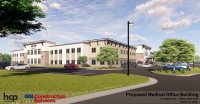Displaying items by tag: economic development
Entrepreneurs Welcome
SEDC to Launch Innovative Incubator
SARATOGA COUNTY – Polish up those ideas because, come Spring, the Saratoga Economic Development Agency (SEDC) is launching an incubator that models innovative entrepreneurial support systems straight out of Silicon Valley, partly by looking at failure and eligibility a little differently than most.
Executive Director of the Clarkson University Shipley Center for Innovation Matt Draper said an entrepreneur who has experienced failure, or an entrepreneur with an idea that would never head to the stock market, is just as eligible for Advance Saratoga Startup as the one who invents the next big tech gadget.
“It’s a huge part of the model,” said Draper. “Everyone points to Silicon Valley and what they are doing, but if you break down what they do better than anybody else, it’s recycle talent. Whether a startup is a success or fails, there is a tremendous amount of experience gained. We want to maintain the investment and engage it in a new way. Rather than making bets on 1 in 10 entrepreneurs, which is the national success average, this model makes sure the other 9 are engaged somehow.”
Dennis Brobston, President of SEDC, agrees. “If you’ve been a good CFO but the startup failed,” said Brobston, “it’s a badge of honor and you always try to hook those people up with people you know because you know their quality. All that talent that they’ve got in their brain combined with what they’ve learned shouldn’t go to waste.”
Brobston added that business networks all know who needs people, and making matches of complementary strengths is a good way to retain talent in Saratoga County, an important component of SEDC’s mission.
Advance Saratoga Startup, (a working title), seeks to accelerate entrepreneurial business growth, and is incorporating prominent members of the business community and local leaders to provide traditional methods of support such as business planning and market research assistance, as well as access to professional expertise to help overcome challenges. SEDC will work through area entrepreneur networks and student organizations in the coming weeks to develop an official name for the initiative.
The incubator was shaped over the course of 2016, culminating in an initial teaming agreement with Clarkson's Shipley Center for Innovation, which operates six business incubators and will provide support services to new entrepreneurs and early stage project teams and companies for Advance Saratoga Startup.
Draper attributes much of the success of the Center and its involvement in this new incubator to the University’s president.
“This all stems from the vision of our president, Tony Collins, who recognizes economic development can’t be successful without a thriving community around it,” said Draper. “Without a president as open as he is to us – none of this could happen. It is very much because of him that we are able to do this.”
Advance Saratoga Startup is set to open its virtual doors sometime in March, and entrepreneurs at any stage of business development are invited to apply.
“One of type of entrepreneur is the gazelle, the traditional high-technology fast-paced startup that we are looking to target with an IPO or acquisition,” said Shipley. “But the second – and often overlooked – is the relevant entrepreneur. These are people who bring value to the region – service providers, people who are one piece of a value chain, maybe a high school student who has an interest in something that sparks an idea. Our model is very much for everyone; we don’t ask people to self-aggregate which type of entrepreneur they are. Too many incubator models focus on one or the other. We are looking for more balance. It’s a really cool ecosystem that builds on itself and supports each other.”
Draper said the key to a successful incubator is not the location, but the programming that attracts and builds entrepreneurs. “The goal is not to duplicate or replicate what already exists. We are filling a niche for something not yet being met, and that makes the entire ecosystem that much stronger.”
Draper explained the entrepreneurial ecosystem is defined as the community or value chain. “Anybody that contributes to the overall success of a startup idea is part of that ecosystem,” said Draper. “It is the teacher that sparks the idea, the web developer that builds the website, the marketing talent that develops the brand working with a graphic artist developing the logo, and the machine shop that builds the first product sample. This model is meant to be inclusive not exclusive. The more we can leverage human capital, the faster we can get up and running.”
According to Brobston, SEDC and its incubator partners have embraced creating this accelerator in part because of the appeal and quality of life that Saratoga County offers. The County is already attracting talent who want to live here; who are seeking to live a quality work-play balance.
“Part of our byline is ‘promote, retain and grow.’ If we have people in Saratoga County working out of their home looking to start a business, we definitely want to work with them,” said Brobston, “but we’ll also be promoting the area to lots of places through our connections to universities and groups outside the area. We want to retain whoever is here, and there is quite a bit of talent here, and grow by providing opportunity for people to consider moving here from somewhere else.”
Dr. Kenneth J. Rotondo, President and Founding Partner of Mind Genomics Advisors said he was very excited when he learned about this project and is delighted to be a part of it. He serves on the Advance Saratoga Startup Advisory Team.
“I think this is definitely needed,” said Rotondo. “From what I’ve gathered living in Saratoga and having an office in Saratoga, I think there is a lot of creativity in a variety of disciplines from the arts and sciences to retail and business development. But there’s not something that allows easy entryway for advice or ideas. It will be very worthwhile and an obvious extension of SEDC’s mission. I turn down more of these things than you can imagine because I want to spend my time on something that has merit and will do some good. I think they are on to something here.”
Brobston recognizes that Advance Saratoga Startup is a startup in and of itself, but demand is high for entrepreneurial support in the region and the level of professional expertise available is an asset ready to give back.
“We’ll keep costs down by leveraging all these assets of staff time and mentors – marketing experts, legal experts – all willing to donate their time,” said Brobston, “as well as operating out of our facilities here in Saratoga Springs. The expertise from Clarkson, which has such a reliable network of undergrads and grads for research and three-D printing, is invaluable. In future, we envision a facility where these people can meet or work out of shared spaces, but much depends on how many applicants there are, their quality, and how quickly we can get them up and running.”
For more information or for those interested in becoming a mentor, contact Ryan Van Amburgh This email address is being protected from spambots. You need JavaScript enabled to view it. or visit www.saratogaedc.com.
Creating an Economic Supermoon: What to Expect in 2017
SARATOGA SPRINGS — The large meeting room at the Saratoga Springs City Center on Thursday, November 10 was crowded with businessmen, land use planners, economic developers and elected officials all wondering the same thing – what do the national election results mean for job creation and economic growth in Saratoga County in 2017? The answer is – it depends.
A supermoon effect of economic growth in any area of the country depends on a planetary alignment that reaches from the federal world of the new President-elect to all the local worlds of homeowners, mayors, town supervisors, and educational institutions, among others. Each group has its own internal shifts and changes, and each affects the other, so economic results can be diverse and unpredictable. Wrapping economic development arms around all those moving parts is a challenge, but one Marty Vanags, president of the Saratoga County Prosperity Partnership (the Partnership), is confident is manageable here in Saratoga County.
To explore how that can be done, the Partnership hosted a Saratoga County Prosperity Summit last week at the City Center, inviting experts such as Hugh Johnson, chairman and CIO of Hugh Johnson Advisors, LLC. Johnson’s successful management work of over a billion dollars in equity and investments for individuals and institutions has prompted his appearances on CNBC, Bloomberg News, NBC Nightly News, Fox Business, The News Hour, ABC World News Tonight, Wall Street Journal, and CBS Evening News. Johnson predicted fewer regulations and a good, solid year for Saratoga County in 2017, although the first half of a new Presidential term historically tends to be a bear market, and nationally, the economy will likely expand at a slow pace.
“The financial market environment will be positive but certainly not great,” said Johnson. “Everything is fine, but I’m saying, hang on, watch carefully and I hope we all collectively have a great 2017.”
The keynote speaker, Jeff Finkle, president, International Economic Development Council said workforce preparedness was one of the biggest issues facing economic developers in 2017. The national focus on a college degree has minimized the number of young people entering the skilled labor force, and developers are feeling that shortage across the country.
Malta Deputy Town Supervisor John Hartzell said that hearing several of the panelists’ concerns about workforce is something the county really needs to pay attention to.
“There’s a crucial need for a trained workforce to meet employer needs going forward in our county and region. I think our local secondary and postsecondary schools are aware of this, and we need to ratchet it up,” said Hartzell. “The other thing I took away from the summit is that economic development success tends to be regional, and that we’re going to have to reach across some traditional lines of counties and economic development agencies to succeed on a regional basis.”
The free summit at the City Center covered a variety of topics – from the state of economic development to case studies and community preparedness. Speakers also included: Matt Jones, Founder, The Jones Firm; Rocky Ferraro, Executive Director, Capital District Regional Planning Commission; Tom Kucharski, President and CEO, Invest Buffalo Niagara; Brian McMahon, Executive Director, New York State Economic Development Council; Congressman Paul Tonko, NY-20 and many others.
Kucharski has presided over a sea change in Buffalo’s economic growth and future prospects. His advice for 2017? “What I found in New York is everyone needs to put their swords down,” said Kucharski. “In this global economy you aren’t competing against each other, you’re competing against the world.”
Wilton Town Supervisor Art Johnson said he found Hugh Johnson’s remarks about the stock market and timing very informative, but the panelists’ comments on preparing a community for economic development hit home for him, validating that Wilton is doing something right.
“A lot of what they were talking about was how to get a project through the local level with some sense of predictability and reliability,” said Art Johnson. “I can relate to that very closely because some things they suggested, Wilton already has in place. We have a free pre-application process where a developer can meet with me, our planning board chair, and both the planning and building departments. We will give them the sense right away whether a project has any chance of going through, what hurdles they may face, and whether traffic or open space will be an issue. Or be honest with them that it’s not going to work. You’d find out upfront before investing in the project. This is helpful for both the town and the applicant.”
One of the areas of unpredictability discussed frequently was the reaction of homeowners and community members to development. Often, a development project will go through several hoops in the process before a public hearing is announced about the project, and the panelists said when a community is surprised or overextended, costs go up and the viability of the project goes down.
“To provide the predictability that is necessary, we need to invest in planning,” said Ferraro. “There’s a failure to do so in many of our municipalities. They use the excuse of regulations as planning, but there should be more than that. There’s an unfairness associated with using SEQR [State Environmental Quality Review] as the planning method. We should start before then. We need to bring the public in earlier in the process, so the developer doesn’t go through the whole SEQR process and then the town holds a public hearing and finds out the public is against the project. Find out the opposition first, be proactive.”
Ferraro gave an analogy of economic development’s impact on roads and other infrastructure. “It’s like this cup of water,” he said. “One project causes this much traffic, filling part of the cup, then the next one causes more, adding more to the cup, then a project comes in that would overflow the cup and that project is hit with all the costs of upgrading the road, even though the cause was the combination of all the previous projects.”
He suggested that rather than hit one developer with all that cost, and possibly lose the project and not get the road upgrades funded, local planning departments could calculate what the future needs of the road would be, and spread that cost across all projects coming in that will contribute to the road’s wear and tear.
“When it comes to the traffic studies as new large developments are being built, what happens is, until you hit the tipping point, there’s no need for additional traffic infrastructure,” said Saratoga Springs Supervisor Peter Martin. “And then when you find you do need it, the next person has to pay for everything. I agree, it’s important to think ahead to allocate those costs to all.”
Another suggestion was providing prospective homeowners with zoning maps, so they know exactly how close they are to land that could be developed commercially in future or other projects.
“It would be easier on everybody if folks, when they bought the property, would have accurate expectations about what will happen,” said Hartzell. “They think the forest or field next door is going to be there forever, and then it’s gone. One of the things we can do is make sure we have the community engaged in the land use planning process, so they have a good understanding of what’s going to happen around them in the community. Having homeowners participate in the process of deciding what will happen around them, even if it’s not exactly what they want, will at least give them the opportunity to participate, provide input, and be aware, which is important. We as town officials should make that happen.”
Finkle summed up the steps to a positive economic future well. He emphasized there needs to be an increase in blue collar labor, with more access to quality training; more concentration on local retention of existing businesses; more attraction and working with small businesses and entrepreneurs; more development project process predictability; and disaster preparedness.
“Ever since Katrina hit, disaster planning response and resiliency is a major issue,” said Finkle. “Even D.C. had an earthquake. Our infrastructure is in serious decline. Are you prepared?”
Vanags said the Prosperity Summit is just one of many conversations like this that will happen.
“I like to think of this as an ongoing dialogue," Vanags said. "The issue of consistency and predictability is most important, and the brokers and businesses want to know what happens during the process, the A-B-C’s that have to be followed, and they want to know if they can count on it. We’ll do that, that’s the role we play, coordinating between government and developers. We want to be the agent for streamlining these processes and I think many of our supervisors know and recognize that. I’m encouraged by the number of people who attended as well as who attended. It’s their investment that makes this kind of thing work. We plan to do a workforce roundtable in the first quarter of next year, so we’re reaching out to local employers for their input as we put that together.”
For more information about the Saratoga County Prosperity Partnership, visit saratogapartnership.org.
Boston Marathon: Bombs Caused Pair of Explosions
BOSTON (AP) — The Boston Marathon says that bombs caused the two explosions heard at the finish line and that organizers were working with authorities to determine what happened.




 How to resolve AdBlock issue?
How to resolve AdBlock issue? 































